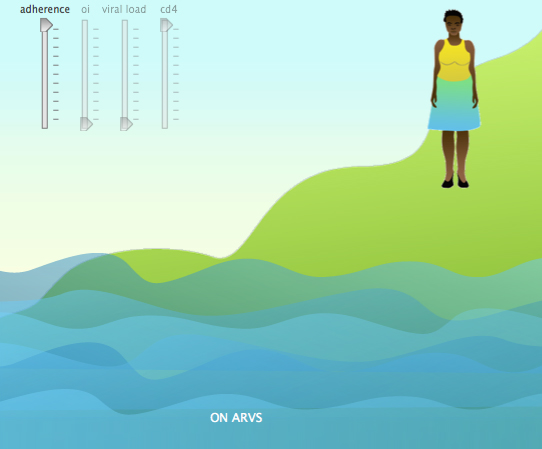Cases
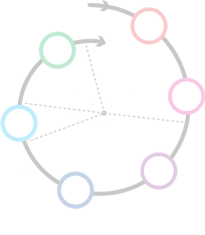
Project Overview: Masivukeni

|
Partner(s):
Robert Remien HIV Center for Clinical and Behavioral Studies Access: Private Revised: December 2012 Released: March 2009 |
Masivukeni, which translates to 'Let's wake up!' in the Xhosa language, is a computer-supported curriculum designed to help patients in South Africa stay on their antiretroviral medication. Masivukeni provides lay counselors with an intervention roadmap and scripts that help them communicate to their patients the importance of adherence to treatment plans. In addition, the Masivukeni tool features interactive activities to help patients build their support network, develop problem-solving skills, visualize their pill regimen, and learn how HIV affects the body as viral resistance develops.
Masivukeni is a collaboration between Dr. Robert Remien, a research scientist at the HIV Center for Clinical and Behavioral Studies; researchers at the University of Cape Town; and CCNMTL. It was developed with assistance from counselors, nurses, and volunteers at the Hout Bay clinic outside of Cape Town, South Africa. The project is supported by a five-year, $3 million grant from the National Institute of Mental Health (NIMH) and builds on a 2007 NIMH grant that facilitated developing and piloting Masivukeni. Masivukeni is now being tested in a randomized control trial at two clinics outside Cape Town, South Africa.
Design: Masivukeni
The CCNMTL team worked with Dr. Remien's team, researchers from the University of Cape Town, and counselors and nurses at the Hout Bay clinic over a period of six months. The research period kicked off with a two week visit to Cape Town and the Hout Bay clinic to learn about the systems already in place and interview representative counselors, patients and nurses. After returning to the U.S., CCNMTL and Dr. Remien's team remained in close contact with the Hout Bay clinic staff and developed the intervention content collaboratively with them.
The intervention consists of several interactive activities that counselors, patients, and support partners do together over the course of several sessions. The example to follow lays out how one activity was developed.
These illustrations represent the development of a metaphor to explain the relationship between viral load, opportunistic infections and CD4 count and how the relationship between these factors affects the body.
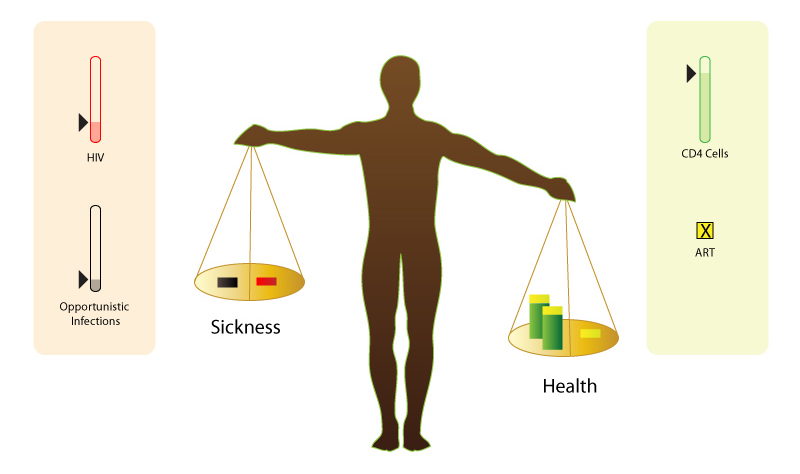 | Figure 1: We started with the metaphor of a scale, placing health-improving factors on one side and illness-increasing factors on the other. |
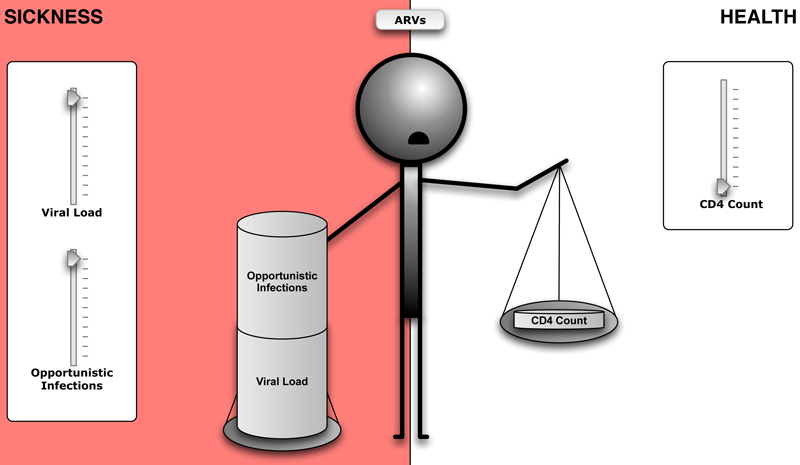 | Figure 2: Based on responses from the Hout Bay clinic team, we used color to emphasize which side of the scale was 'winning.' |
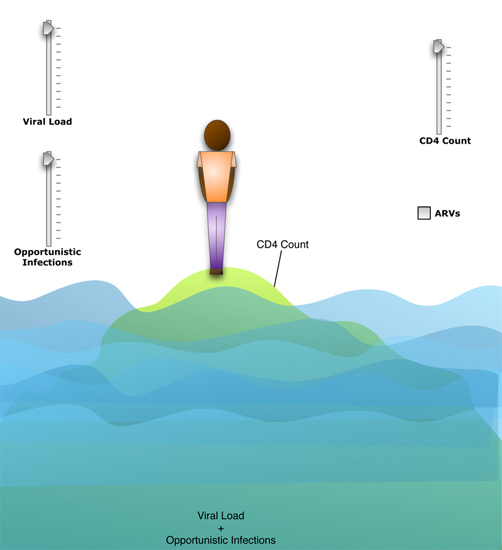 | Figure 3: Based on more feedback from Hout Bay, we threw out the scale metaphor as too confusing, and moved to the idea of rising water. |
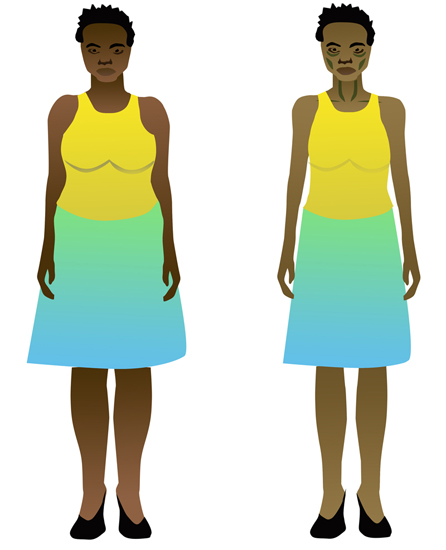 | Figure 4a: Our Hout Bay collaborators told us that they found comparing the progression of HIV/AIDS with illustrations of a sickening body to be a useful conversational aid with patients.... |
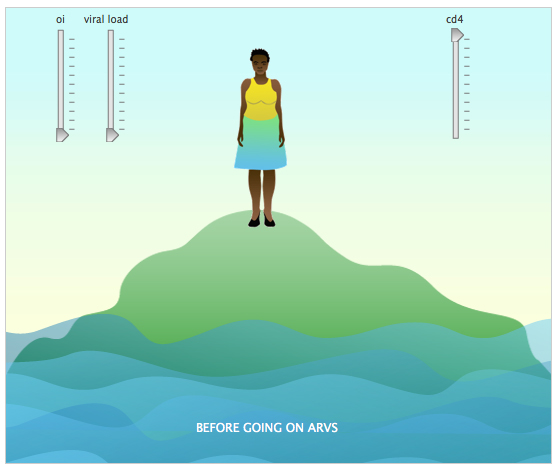 | Figure 4b: ... So, we added more realistic illustrations, including a body that reflects the health state represented by the water height. |
The collaborative nature of the design phase of the project has led to multiple positive outcomes for the project as a whole. The clinic staff and peer counselor volunteers are invested in seeing the project though and have carved out space and time for the pilot test to take place. When the pilot is completed, the clinic looks forward to using elements of the intervention with future patients.


